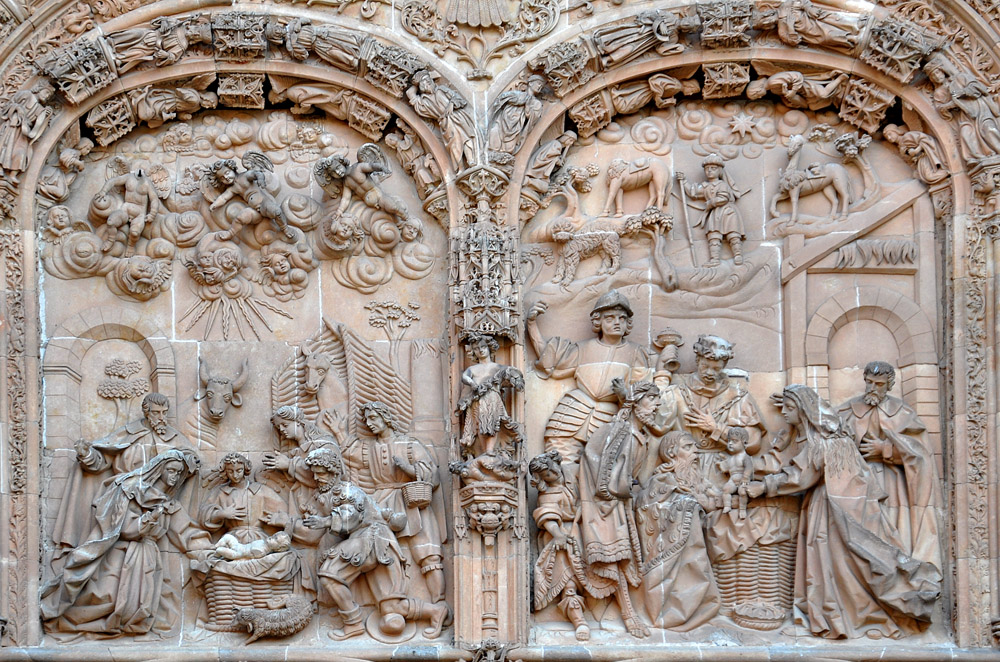The Nativity and Adoration of the Magi

16th century
In the principal façade of the New Cathedral, Salamanca, Spain
LEFT SIDE:
Woven wicker is a feature of many medieval Nativities. In those it is usually confined to a low fence surrounding the scene, but here it is seen in the manger and in the strikingly stylized enclosure behind the shepherds.
The shepherds themselves are portrayed as representing the three ages of man: a youth on the left, a man of middle age on the right, and an old man in front. They have brought three gifts, a detail not from scripture but found in the miracle plays and obviously echoing the gifts of the Magi. One of the gifts is a lamb, an allusion to the "Lamb of God" who has just been born that is emphasized by the lamb's placement parallel to the child.
As in images subsequent to Bridget of Sweden's vision, the child is naked and bright, with Mary on her knees before him. St. Joseph's right hand appears to be broken off; considering the gesture, it may have held the candle that is another feature of Bridgettine iconography.
Above the scene are the angels and star that figure in the announcement to the shepherds.
RIGHT SIDE:
The upper register resembles narrative images of the Magi's travel to Bethlehem, led by the star. But apparently the camels, the dog, and the man in breeches constitute the humbler part of the Magi's retinue as they wait for their masters to return from the birthplace. They are in contrast with the smartly arrayed soldier and valet in the lower register.
The mage standing behind the child has somewhat African facial features. His mustache and otherwise smooth face may also distinguish him as the youngest of the three; the mage in front has a long beard and the one behind him a short beard.
As in the left panel, the child is naked and the penis is visible.
View this image in full resolution.
Read more about the Nativity and the Magi.
Photographed at the cathedral by Richard Stracke, shared under Attribution-NonCommercial-ShareAlike license.